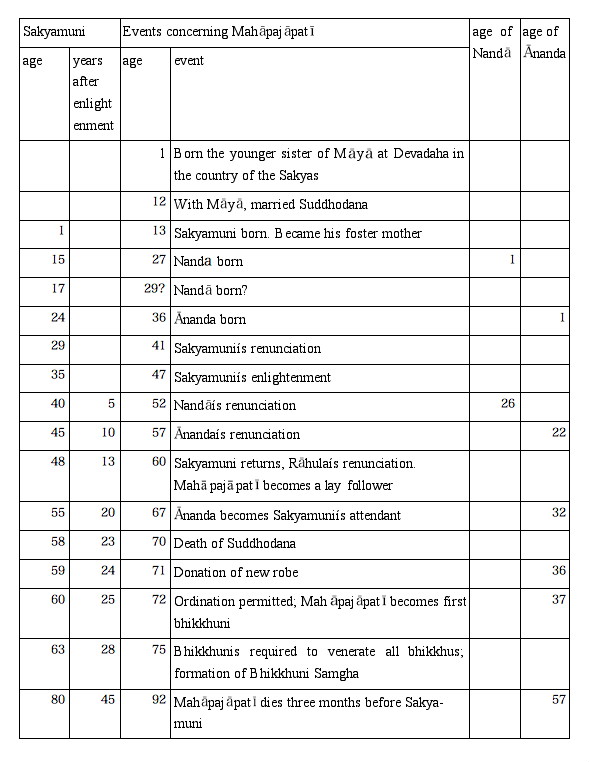
Introduction
1. The origins of Mahāpajāpatī (family background, parents, sisters, children, etc.)
2. Mahāpajāpatī as foster mother of Sakyamuni
3. The donation of the new robe
4. The renunciation of Mahāpajāpatī
5. The eight garudhammas and the systematization of the bhikkhuni
6. Mahāpajāpatī's activities in the Bhikkhuni Saṃgha
7. The death of Mahāpajāpatī
8. A short biography of Mahāpajāpatī, with a conclusion
 |
Gotamī, Mahāpajāpatī, Bhikkhuni Sangha, Mahāmāyā, the eight garudhammas (strict rules), Nanda, Ānanda, Rāhula, King Suddhodana, the donation of the new robe |

It is widely known that Mahāpajāpatī Gotamī raised Sakyamuni after the death of his mother Mahāmāyā in childbed, that as the wife of King Suddhodana she gave birth to his half-brother Nanda, and that the Bhikkhuni Saṃgha was established after she became the first woman to be permitted ordination as a bhikkhuni.
The ordination of woman was an epoch-making event, to the extent it was said that it would reduce the duration of the Buddha Dhamma from one thousand to five hundred years. If we knew when this occurred, we could infer that sutras in which bhikkhunis appear and regulations concerning bhikkhunis came into existence after that date. This article seeks to shed light on a number of questions, such as the life of Mahāpajāpatī Gotamī, the time when the Bhikkhuni Saṃgha was formed, and the background to the formation, through analysing a broad selection of sources, including early scriptures in both Pali and Chinese, and commentaries on them.
Our conclusions are contained in the following table dealing with Mahāpajāpatī Gotamī's life and the formation of the Bhikkhuni Saṃgha.
We suggest that there was a considerable age difference between the sisters Mahāpajāpatī Gotamī and Mahāmāyā. They married Suddhodana at the same time, but because Mahāmāyā died soon after Sakyamuni's birth, Mahāpajāpatī became his step mother, despite her extreme youth.




